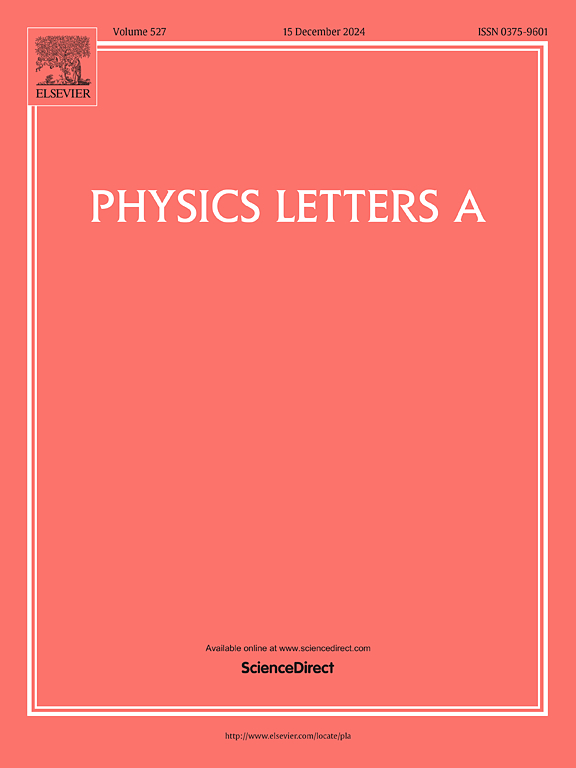Magnetic-substate ionization of medium- and high-Zt elements induced by proton impact
IF 2.6
3区 物理与天体物理
Q2 PHYSICS, MULTIDISCIPLINARY
引用次数: 0
Abstract
Magnetic-substate ionization of -subshell and the consequent atomic alignment of molybdenum, cadmium, indium and gold ions are reported for proton impact with low incident velocity range (0.147∼0.232), (0.124∼0.196), (0.120∼0.191), (0.067∼0.107), respectively. Here, is the classical orbital velocity of an electron in the -subshell of the target atom. It is demonstrated that the and X-ray lines present spatially non-isotropic emission. Coster-Kronig calibration factors as well as anisotropy coefficients are calculated to derive the alignment parameter . Unifying and the cross section in direct ionization, a novel methodology to determine the cross sections and for magnetic substate ionization is introduced. The results manifest that both cross sections exhibit positive correlation with the incident energy and inverse correlation with atomic number of the target. The cross section is found to be greater than , and the tendency of the ratio varies regularly and gradually as the atomic number increases for the four targets. Particularly, it also implies that the ionization cross section for high- targets exhibits a more remarkable increase rate with the increase of incident energy. Experimental results are well understood by taking account of probability density distribution of the orbital electrons.
质子撞击诱导中、高zt元素的磁亚态电离
在低入射速度范围(0.147 ~ 0.232)vL3, (0.124 ~ 0.196)vL3, (0.120 ~ 0.191)vL3, (0.067 ~ 0.107)vL3的质子碰撞中,报道了l3 -亚壳的磁亚态电离和钼、镉、铟和金离子的原子排列。这里,vL3是目标原子l3亚壳层中电子的经典轨道速度。结果表明,l - β2和l - α x射线线呈空间非各向同性发射。计算了Coster-Kronig校正因子和各向异性系数,得到了对准参数A20。结合直接电离中的A20和截面σ l3,提出了一种确定磁亚态电离截面σ(32,12)和σ(32,32)的新方法。结果表明,两个截面与入射能量呈正相关,与靶原子序数呈负相关。截面σ(32,12)大于σ(32,32),且σ(32,12)之比σ(32,32)随原子序数的增加而有规律地逐渐变化。特别是高zt目标的电离截面随着入射能量的增加呈现出更显著的增加速率。通过考虑轨道电子的概率密度分布,可以很好地理解实验结果。
本文章由计算机程序翻译,如有差异,请以英文原文为准。
求助全文
约1分钟内获得全文
求助全文
来源期刊

Physics Letters A
物理-物理:综合
CiteScore
5.10
自引率
3.80%
发文量
493
审稿时长
30 days
期刊介绍:
Physics Letters A offers an exciting publication outlet for novel and frontier physics. It encourages the submission of new research on: condensed matter physics, theoretical physics, nonlinear science, statistical physics, mathematical and computational physics, general and cross-disciplinary physics (including foundations), atomic, molecular and cluster physics, plasma and fluid physics, optical physics, biological physics and nanoscience. No articles on High Energy and Nuclear Physics are published in Physics Letters A. The journal''s high standard and wide dissemination ensures a broad readership amongst the physics community. Rapid publication times and flexible length restrictions give Physics Letters A the edge over other journals in the field.
 求助内容:
求助内容: 应助结果提醒方式:
应助结果提醒方式:


